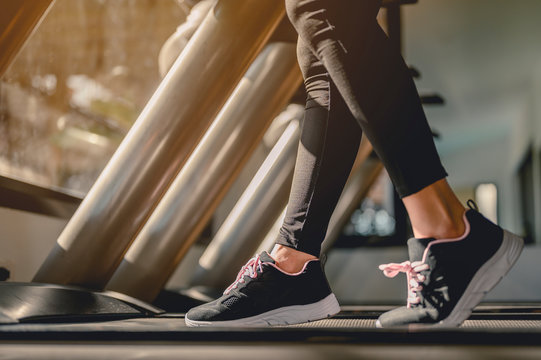Are you tired of feeling winded after climbing a flight of stairs or struggling to keep up during your favorite sports activity? It's time to take control of your cardiovascular fitness! But where do you begin? With so much information out there, it can be overwhelming to know what exercises are best and how often to do them. That's why we've put together a short and sweet guide to help get you on the path to a healthier heart and stronger lungs. Whether you're a fitness newbie or just looking for some new ways to spice up your routine, this guide has got you covered. So, let's get started on the road to better cardio fitness!
Introduction to Cardio Fitness
Cardio fitness is a type of exercise that focuses on increasing your heart rate and breathing rate. It is also known as cardiovascular exercise or aerobic exercise. The main goal of cardio fitness is to improve your overall health and fitness level by strengthening your heart and lungs. This type of exercise can be done in many different ways, such as running, cycling, swimming, or dancing. It is important to incorporate cardio into your workout routine because it can help you burn calories, reduce stress, and improve your mood. Whether you are a beginner or an experienced athlete, cardio fitness can benefit anyone who wants to improve their health and fitness level.
The Benefits of Cardio Fitness
Cardio fitness is an essential component of overall health and well-being. Regular cardiovascular exercise not only helps manage weight but also improves heart health, boosts mood, and increases energy levels. Research has shown that cardiovascular exercise can also reduce the risk of chronic diseases such as diabetes, hypertension, and certain types of cancer. Additionally, cardio workouts are an effective way to burn calories and shed unwanted body fat. Incorporating regular cardio sessions into your workout regimen can help you achieve a leaner physique while improving overall health markers such as cholesterol levels and blood pressure readings. Whether it's running on a treadmill, cycling outdoors or taking dance-based classes - there are many beneficial ways to incorporate cardio exercises into your daily routine.

The Different Types of Cardio Exercise
Cardio exercise is any activity that raises your heart rate and gets your blood pumping. There are many different types of cardio exercise, each with its own unique benefits. Running is a popular form of cardio that can improve cardiovascular health, increase endurance, and burn calories. Cycling is another great option that is low-impact and can be done indoors or outdoors. Other types of cardio include swimming, dancing, and jumping rope. It's important to choose a type of cardio that you enjoy so that you're more likely to stick with it. Mix things up by trying different types of cardio to challenge your body and prevent boredom. Remember to start slow and gradually increase the intensity and duration of your workouts to avoid injury.

How to Incorporate Cardio Into Your Workout Routine
Incorporate Cardio Into Your Workout Routine
One of the easiest ways to incorporate cardio into your workout routine is to start small and gradually increase the intensity and duration. For starters, you can add a 10-minute jog or brisk walk at the beginning or end of your regular workouts. You can also try using machines such as treadmills, ellipticals or stationary bikes for a low-impact aerobic exercise. Group fitness classes like Zumba, dance aerobics or kickboxing are also great options for those who enjoy socializing while working out.
It's important to note that varying the type of cardio exercise you do not only keeps things interesting but it also targets different muscles in your body which can prevent injury caused by overuse. Additionally, incorporating high-intensity interval training (HIIT) into your routine will help you burn more calories in less time compared to traditional steady-state cardio exercises. Consider trying new activities like hiking, cycling outdoors or swimming; not only will they change up your usual routine but they'll provide an opportunity for some fresh air and natural scenery too!

Tips for Getting the Most Out of Your Cardio Workouts
Tips for Getting the Most Out of Your Cardio Workouts
To maximize the benefits of your cardio workouts, it's important to follow these tips:
- Increase intensity gradually: Don't push yourself too hard at the beginning; increase your intensity slowly and steadily over time.
- Wear comfortable shoes: Invest in a pair of good-quality, supportive and well-cushioned shoes that provide enough grip.
- Stay hydrated: Drink plenty of water before, during and after your workout.
- Mix it up: Incorporate different types of cardio exercises into your routine to prevent boredom and target different muscle groups.
Remember to also listen to your body - if you feel any pain or discomfort, slow down or take a break as needed. By following these tips, you can ensure that you are getting the most out of every cardio workout session!

The Importance of Warm-ups and Cool-downs
Warm-ups and cool-downs are essential components of any cardio workout routine. They help to prepare your body for exercise and prevent injury. A proper warm-up should include light aerobic activity, such as jogging or jumping jacks, followed by dynamic stretching to loosen up your muscles. Your cool-down should consist of static stretching to improve flexibility and reduce muscle soreness.
Skipping warm-ups and cool-downs can lead to muscle strains, sprains, and other injuries. It's important to take the time to properly warm up and cool down before and after each cardio workout session. In addition, gradually increasing the intensity of your workout during the warm-up phase can help prevent injury.
Don't rush through your warm-up or cool-down. Take your time and focus on each movement. By doing so, you'll be able to get the most out of your cardio workouts while minimizing the risk of injury.
Common Cardio Workout Mistakes to Avoid
Overtraining and poor form are some of the common mistakes people make when doing cardio workouts. Overtraining happens when you push your body too hard, too fast, without giving it enough time to rest and recover. This can lead to injuries or even burnout. Poor form, on the other hand, can also cause injuries and decrease the effectiveness of your workout. Make sure you maintain proper posture and alignment throughout your exercise routine.
Another mistake is not varying your workouts enough. Doing the same cardio routine day in and day out can quickly become boring, which makes it harder to stay motivated over time. Try different types of cardio exercises such as cycling or swimming along with running or walking outside on different terrain (e.g., hills). Additionally, switch up the duration and intensity levels for a more challenging experience that keeps things interesting!

How to Motivate Yourself to Keep Up with Cardio Fitness
Motivate Yourself to Keep Up with Cardio Fitness
Sticking to a regular cardio routine can be challenging, but there are several ways to motivate yourself and make it enjoyable. First, set realistic goals for yourself and track your progress. This will give you a sense of accomplishment and keep you motivated.
Next, find an accountability partner or join a fitness class where you have others pushing you towards success. Additionally, switch up your workout playlist or watch motivational videos during your cardio sessions.
It's also important to reward yourself after achieving milestones in your fitness journey. Treat yourself to something that is not food-related such as new workout gear, spa day or extra time on your favorite hobby.
Lastly, remember the benefits of regular cardiovascular exercise which goes beyond physical health- increased mental focus & reduction in stress levels!

The Best Time of Day to Do Cardio Exercise
Morning vs. Evening: Which is the Best Time for Cardio Exercise?
When it comes to cardio exercise, the best time of day to do it depends on your personal preference and schedule. However, there are some key factors to consider. Morning cardio can help jumpstart your metabolism and give you energy for the day ahead. It can also be a great way to establish a consistent routine. On the other hand, evening cardio can help you unwind after a long day and relieve stress. It may also allow you to push yourself harder since your body is already warmed up from daily activities. Ultimately, the best time for cardio is whenever you can commit to doing it consistently.
The Benefits of Doing Cardio in the Morning
Doing cardio in the morning has numerous benefits for fitness enthusiasts. First and foremost, it helps kickstart your metabolism, allowing you to burn more calories throughout the day. Additionally, morning cardio can be a great way to energize yourself and set a positive tone for the rest of your day. Research also suggests that doing fasted cardio in the morning - exercising before eating breakfast - can enhance fat burning and improve insulin sensitivity. Finally, working out first thing in the morning means you get it done before other responsibilities or distractions arise later in the day, making it easier to stay consistent with your fitness routine.
The Advantages of Doing Cardio in the Evening
If you're someone who struggles to fit in exercise during the day, doing cardio in the evening may be your best option. Not only can it help you unwind and destress after a long day at work, but studies have shown that working out later in the day can actually lead to more calories burned overall compared to morning workouts. Plus, if you struggle with insomnia or trouble falling asleep at night, doing cardio earlier in the evening (at least 2-3 hours before bedtime) can help tire out your body and promote better sleep. So next time you're debating when to fit your workout in, consider trying an evening sweat session!
Finding Your Ideal Time for Cardio Exercise
The best time of day to do cardio exercise depends on your schedule and personal preferences. Some people prefer to do cardio in the morning to kickstart their day and boost their metabolism, while others prefer to do it in the evening as a way to unwind after work. It's important to find a time that works for you and stick with it consistently. Consistency is key when it comes to seeing results in your fitness journey. Additionally, consider the temperature and humidity levels during the time of day you plan to exercise, as this can affect your performance and overall experience.

How to Mix Things Up to Avoid Boredom with Cardio
Mixing up your cardio routine is important for several reasons. First, doing the same exercises every day can become boring and may make you lose motivation to continue with your fitness journey. Second, our bodies get used to doing the same exercises repeatedly which can result in slower progress towards your fitness goals.
To prevent this from happening, it's recommended that you change things up regularly. This can be done by trying out different types of cardio workouts or varying the duration and intensity of your current routine. For example, if you usually do a 30-minute run on the treadmill, try cycling or using the elliptical machine instead.
Additionally, incorporating interval training into your workouts is a great way to challenge yourself while also burning more calories in less time. Experiment with tabata intervals (20 seconds work/10 seconds rest) or pyramid intervals (increasing/decreasing intensity) during your cardio sessions.
Remember that mixing things up doesn't have to be complicated - even small changes like running outside instead of on a treadmill or taking a dance class once a week can make all the difference in keeping you engaged and motivated!
FAQs About Cardio Fitness
Q: How often should I do cardio exercise?
The American Heart Association recommends at least 150 minutes of moderate-intensity aerobic activity or 75 minutes of vigorous aerobic activity per week. This can be broken down into 30-minute sessions, five days a week for moderate-intensity exercise or 25-minute sessions, three days a week for vigorous exercise. However, it's important to listen to your body and not overdo it. If you're just starting out, begin with shorter sessions and gradually increase the duration and intensity.
Q: Can I do cardio exercise if I have joint pain?
Yes, there are low-impact cardio exercises that are easier on the joints such as swimming, cycling, or using an elliptical machine. It's important to consult with a doctor or physical therapist before starting any new exercise routine, especially if you have joint pain or other medical conditions. They can recommend specific exercises that will be safe and effective for you.

Conclusion
Cardiovascular fitness is a crucial aspect of overall health and well-being. Regular cardio exercise can help decrease the risk of chronic diseases such as heart disease, diabetes, and obesity. By incorporating different types of cardio into your workout routine, you keep things exciting and prevent boredom from setting in. It's important to warm up before starting any cardiovascular activity to prevent injuries or strain on the body, and cool down afterward to ease back into a resting state. One common mistake people make when it comes to cardio workouts is doing too much too soon - it's essential to start slowly and gradually build up intensity over time.
To stay motivated with your cardio fitness regimen, set realistic goals for yourself that align with your lifestyle and personal preferences. Consider finding a workout partner or joining a class for accountability and additional support. When deciding on the best time of day for cardio exercise, bold morning workouts have been shown to increase metabolism throughout the day while also setting an energizing tone for the rest of the day ahead.
Overall, don't be afraid to mix things up by trying new exercises or increasing intensity levels - this will help avoid plateaus in progress while keeping things engaging!
In conclusion, cardio fitness is an essential aspect of overall health and wellness. By incorporating different types of cardio exercise into your workout routine, you can reap numerous benefits such as improved heart health, increased endurance, and weight loss. However, it's important to avoid common mistakes and properly warm up and cool down to prevent injury. By staying motivated and mixing things up to avoid boredom, you can make cardio fitness a sustainable part of your lifestyle. So lace up those sneakers and get moving towards a healthier you!
